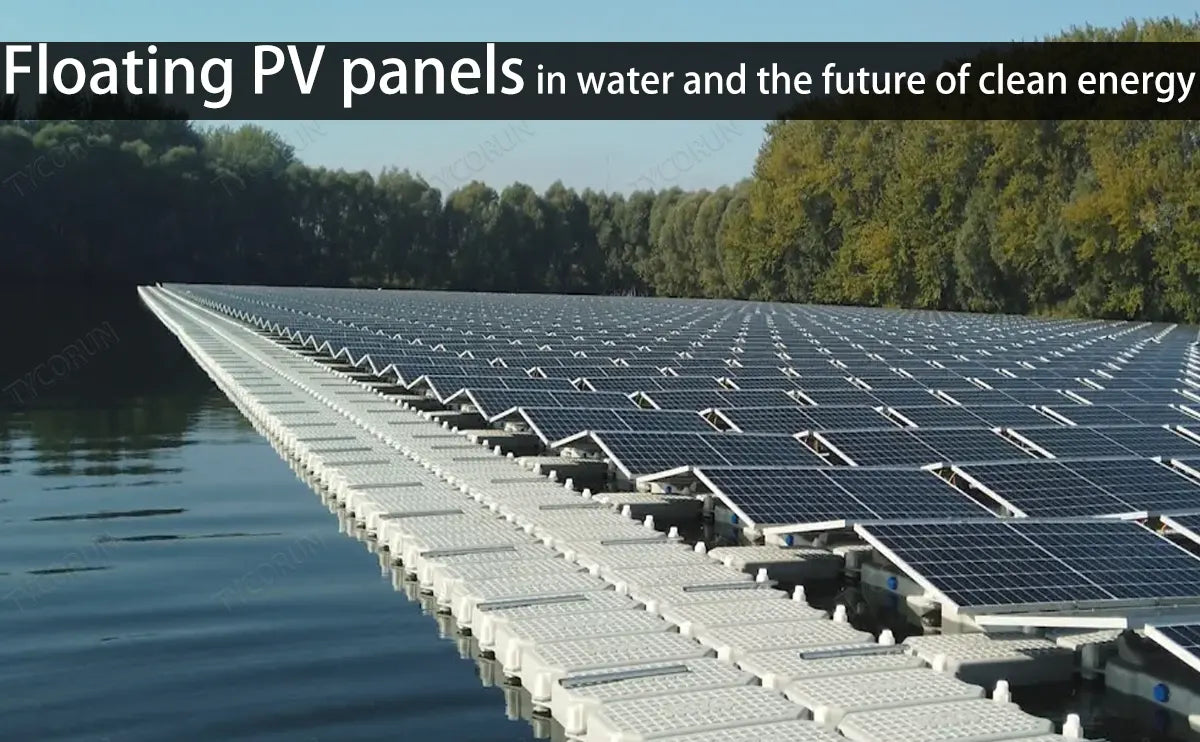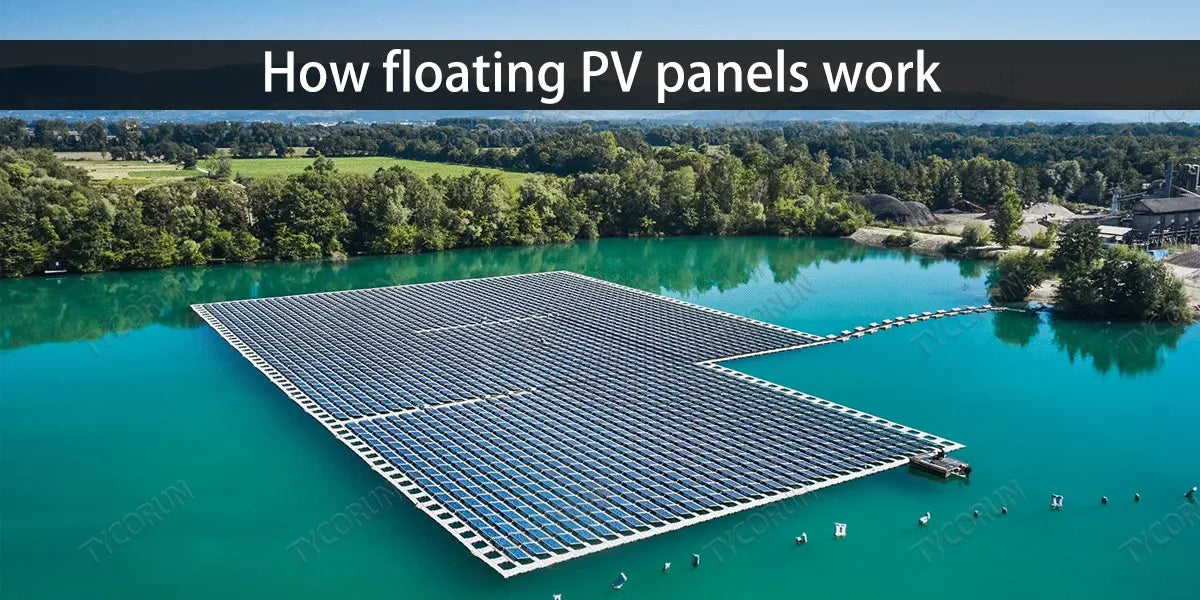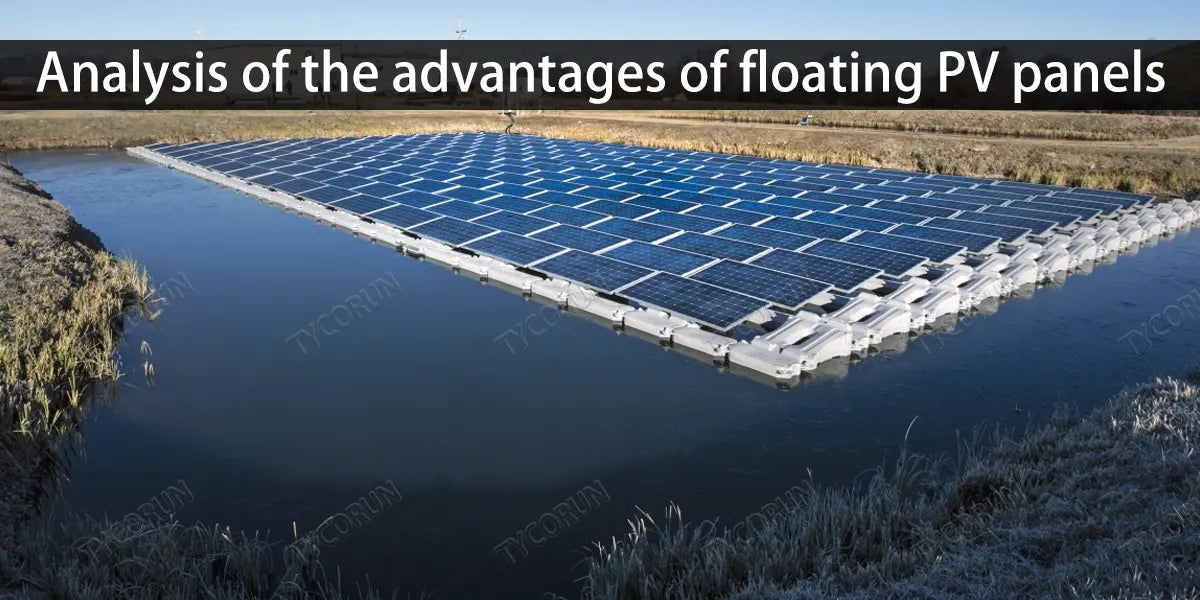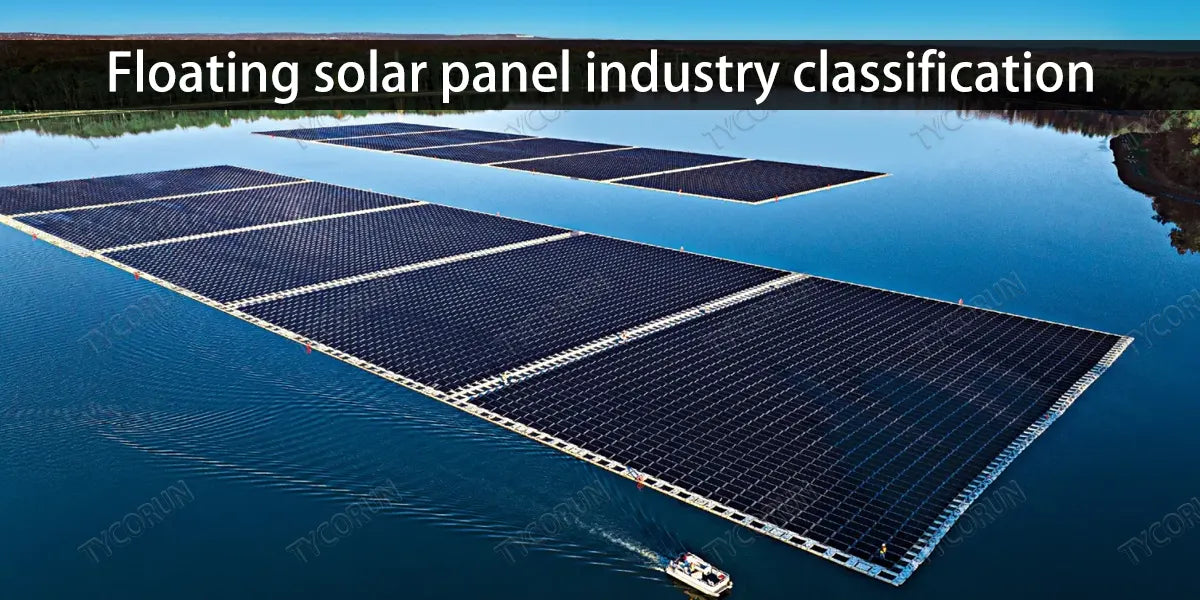
Main content:
- What are floating PV panels
- How floating PV panels work
- The working process of floating PV panels to generate electricity
- Characteristics of floating solar panels
- Analysis of the advantages of floating PV panels
- What are the disadvantages of floating PV panels
- Floating solar panel industry classification
- Conclusion
One study found that covering a reservoir with floating PV panels could generate three times as much electricity as it currently does.
Solar panels are one of the cheapest and most efficient ways to generate electricity, but they also take up a lot of space. The innovative solution installs them in parking lots, garbage dumps and farms.
1. What are floating PV panels
A floating solar panel is a specially designed type of solar panel that is usually used to float on water or in a liquid medium. They are widely used in solar photovoltaic power generation system and aim to convert light energy into electricity by utilizing solar energy.
Floating PV panels typically consist of multiple solar cells that work by absorbing solar radiation and converting it into direct current. These panels are made of waterproof and corrosion resistant materials to ensure that they can operate stably on the water for a long time.
2. How floating PV panels work
Solar panels are the core components of floating solar panel power generation, which is achieved through the mechanism of converting solar energy into electrical energy.

Solar panels are typically made of silicon material, which contains many semiconductor crystals. When sunlight hits the surface of a solar panel, semiconductor crystals inside the panel release electrons, forming an electric current that produces electricity.
3. The working process of floating PV panels to generate electricity
- Solar panels receive sunlight energy
Solar panels absorb energy from sunlight through a silicon semiconductor material on the surface, generating electrons and forming an electrical voltage.
- The controller regulates the current
The input voltage of the solar panel, the current current intensity, and the state of the solar panel and the electric low voltage 12v 100ah lithium ion batteries are referenced here. The controller adjusts the current accordingly to prevent backflow and outputs the maximum power point to the 12 volt 200ah lithium battery storage device.
4. Characteristics of floating solar panels
Floating PV panels are designed with buoyancy and stability in mind, usually through the adoption of structures such as buoyancy devices or pontoons. These devices allow high efficiency solar panels to float on the water and automatically adjust to face the sun based on the angle of the sun's rays.
Floating PV panels are mainly used in aquatic environments such as reservoirs, lakes, ponds, and oceans. They can provide green energy to nearby facilities or equipment, such as water supply systems, irrigation systems, aquaculture, etc.
In addition, floating PV panels can also be used in the construction of floating photovoltaic power station, providing large-scale solar power generation capacity.
5. Analysis of the advantages of floating PV panels
- Renewable energy
Floating solar panels use solar light to generate electricity and are a clean, renewable form of energy that helps reduce dependence on traditional fossil fuels.

- Multi-field applications
Floating solar panels have a wide range of application prospects in water power generation, farmland irrigation, urban infrastructure power supply and other fields, and can provide clean energy solutions for different fields.
- Environmentally friendly
Floating PV panels have a low environmental impact and do not produce pollutants such as exhaust gas, waste water and noise, which is conducive to reducing carbon emissions and protecting the environment.
6. What are the disadvantages of floating PV panels
- Technical challenges
The technology of floating PV panels still faces some challenges, such as improving photoelectric conversion efficiency and enhancing water resistance, which require further research and innovation.
- Cost pressures
The cost of floating PV panels is currently relatively high, including manufacturing and installation costs. Cost reduction is key to industry development and needs to be achieved through economies of scale and process improvement.
- Market size limitations
The market for floating solar panels is relatively small and limited by geography and scope of application. Expanding market demand requires exploring more potential applications and solutions.
7. Floating solar panel industry classification
Floating PV panels can be divided into crystalline silicon solar cells and amorphous silicon solar cells based on the material. The manufacturing process of crystalline silicon solar cells is similar to that of monocrystalline silicon solar cells.

However, its photoelectric conversion efficiency is slightly lower, about 12%. In terms of production cost, it is cheaper than monocrystalline silicon solar cells. Because the material is easy to manufacture, it saves electricity consumption and the total production cost is low.
Amorphous silicon solar cells usually have a low manufacturing cost and good low light performance. In addition, floating PV panels can also be further classified according to their application scenarios and design characteristics.
8. Conclusion
There are many benefits to floating solar panels. Placing panels on water keeps them cool, which increases efficiency, and the absence of dust and dirt means they stay clean for longer.
At present, the biggest obstacle to the adoption of floating photovoltaic technology is cost, because floating PV panels need to be anchored to the system, which requires additional costs.
Related articles: silicon pv, off grid batteries, Top 5 distributed photovoltaic companies
















